
‘In 1951, Ed Emshwiller (1925–1990), a World War II veteran and fledgling commercial illustrator from Michigan who had studied in Paris and at the Art Students League of New York, bought a house with his wife, Carol, in Levittown, a newly built community on Long Island that offered lines of credit to GIs. A prime midcentury symbol of cookie-cutter conformity, middle-class anxiety, and real-estate redlining, Levittown provided the Emshwillers with a secure base from which to launch their careers, Ed as an artist, Carol as a writer. The Emshwillers were perhaps the sole residents who fully dedicated themselves to the postwar American project of self-fulfillment and integrated personality (in a segregated community). “They were the only beatniks in Levittown,” recalled their then-teenage neighbor Bill Griffith, who went on to create the Zippy the Pinhead comics. His father, Griffith maintains, envied the Emshwillers. They didn’t commute to Manhattan every day.
‘Instead, Ed Emshwiller worked in his second-floor home studio, painting illustrations for the covers of sci-fi magazines, including Galaxy, Infinity, and Astounding Science Fiction, and cheap novels by Philip K. Dick, Leigh Brackett, and Samuel R. Delaney. Emshwiller was good at this, and successful. He won five Hugo Awards. He supported his growing family. Some months, his illustrations accounted for a third of all those published in the sci-fi pulps. He drew aliens on other planets, spacemen in cockpits zipping through the cosmos, and rats controlling men’s brains. He painted women in crazed poses with defiant looks in their eyes. A 1957 illustration titled Disintegration of a Field-Force features a blast of light behind a body-suited woman twisting and reaching in space, and it predicts the dance films he would make.
‘By the 1960s, Emshwiller, like Andy Warhol, had turned from commercial illustration to 16-mm filmmaking, blacking out the windows in his studio so he could make movies, Factory style, in Levittown. His singular body of work experimented with form, dance, narrative, and social psychology; he mixed them together, sometimes uneasily. “Dream Dance: The Art of Ed Emshwiller,” a film series and exhibition curated by Jesse Pires at Lightbox Film Center and the Rosenwald-Wolf Gallery at the University of the Arts in Philadelphia, celebrated Emshwiller’s lifework across the popular and the experimental, combining his genre illustrations with his films, videos, and computer animations. Shown together, they reveal Emshwiller as a voracious bohemian workaholic.
‘Self-taught, he first experimented by photographing close-ups of paint, rewinding the film in the camera, then filming dancers so they would move around the brushstrokes. He debuted Dance Chromatic in 1959 at Amos Vogel’s Cinema 16 in Manhattan and promptly won an award. Soon he was part of the New York avant-garde. Jonas and Adolfas Mekas modeled for one of his illustrations, appearing as a space pilot and an emaciated wraith, respectively, on the cover of the Magazine of Fantasy and Science Fiction. Emshwiller returned the favor by acting in Adolfas’s Hallelujah the Hills (1963).
‘Emshwiller was as prolific a filmmaker as he was an illustrator, working on more than seven dozen films and videos in his lifetime. He also became a cinematographer, shooting Jonas Mekas’s The Brig (1964) and several documentaries. He shot black-voter-registration drives in Mississippi, cinema vérité style, and Resnais-like hallways filled with banks of data-crunching computers for a PBS film on mind control. He worked for the United States Information Agency as a director-cinematographer and made Project Apollo in 1968, a stunningly original spaceflight film. Alfred Hitchcock and Stanley Kubrick both came to visit him in Levittown. It seems like they were the only filmmakers he ever turned down. While he was a dean at CalArts in the 1970s, he worked on primitive computer animations with Alvy Ray Smith, one of the guys who would go on to start Pixar.
“It’s Emshwiller’s body that is vomiting out its existential memories and suspicions,” Jonas Mekas wrote in the Village Voice in 1970. Emshwiller’s busyness, his constant Brownian motion, takes away from his most lasting achievement as a film artist. Post–Maya Deren and pre–Yvonne Rainer, he is the best director of dance films in experimental and expanded cinema. The two dozen or so he made, including Chrysalis (1973) and Film with Three Dancers (1970), surpass his earlier, knottier film work with an otherworldly beauty absent from death-haunted cascades of images like Thanatopsis (1962) and Relativity (1966).
‘His dance films take place “in space”; Film with Three Dancers features Creation of the Humanoids–esque performers in monochrome leotards and silver bathing caps who are lit with colored lights similar to those in Italian space flicks and horror movies. Made with the Alwin Nikolais Dance Company and often featuring the choreographer-dancer Carolyn Carlson, three movement studies connect Emshwiller’s view of natural landscapes and space flight to the human body. In other videos, like Scape-Mates (1972) and Pilobolus and Joan (1973), which was written by Carol, Emshwiller took dance from his homemade stage into the laboratory, where the real world met a virtual one inside his computer.
‘In the latter film, members of the dance troupe Pilobolus crawl in centipede-like formation against a chroma-key backdrop of the twin towers, serenaded at times by a folk singer. In the former, dance figures blip out of colorful grids and blocks. Both films are trippy, complex, and not a little nuts. A final work, Hungers (1988), an avant-garde space opera worthy of Sun Ra, with music by Morton Subotnick sung on-screen by Joan La Barbara, expresses the human soul flying free from corporeality, free from Levittown and any known planet.’ — A. S. Hamrah, Artforum
____
Stills


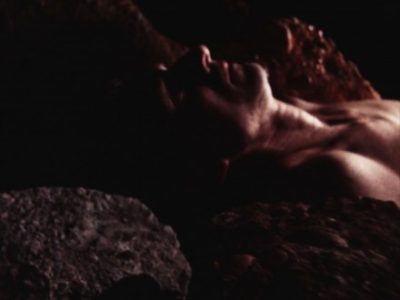
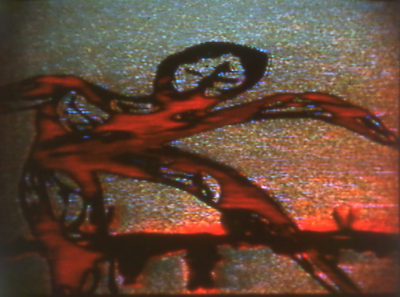


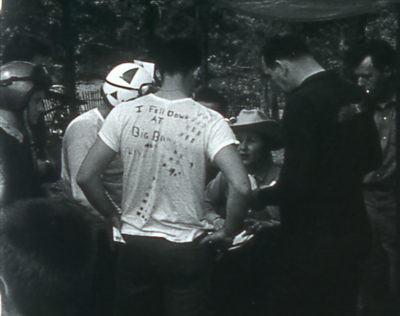
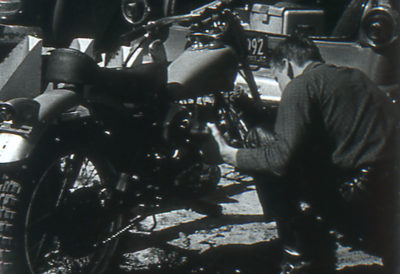
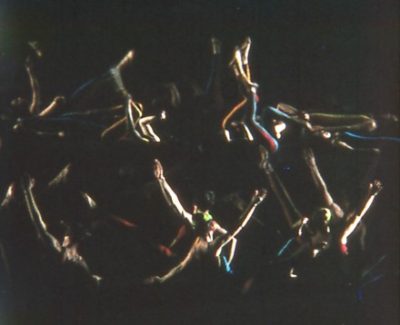


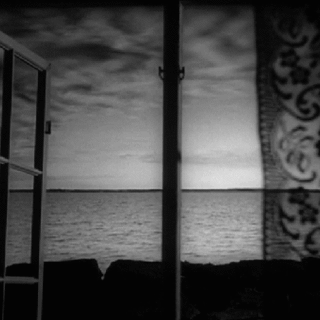
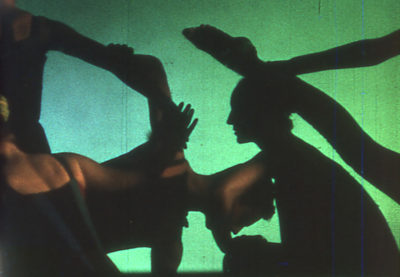
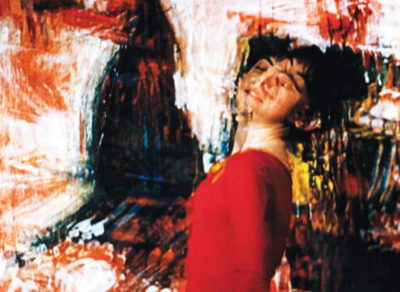


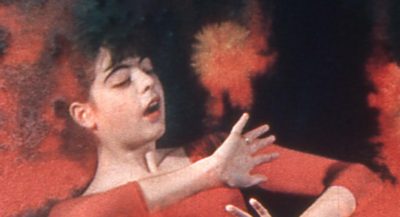




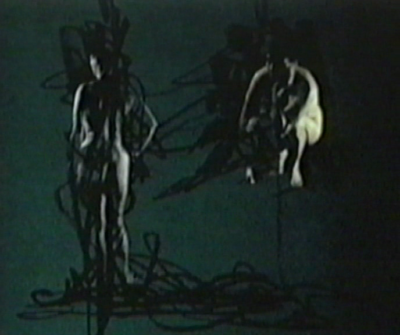





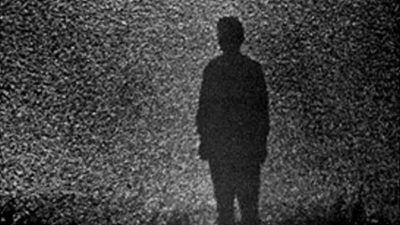

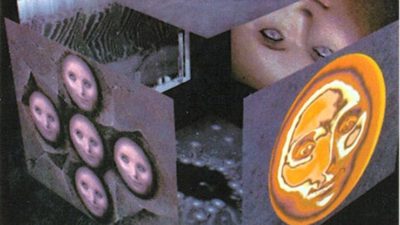

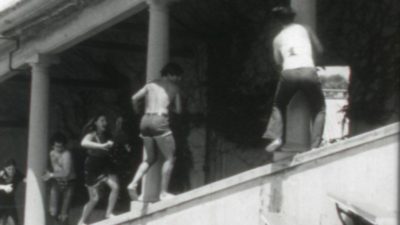







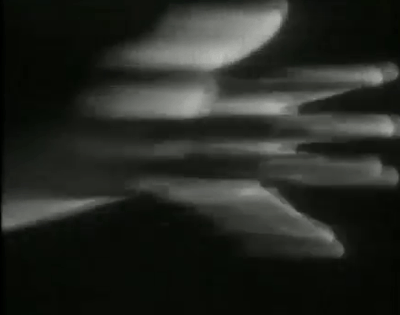
___
Further
Ed Emshwiller @ Wikipedia
SCIENCE-FICTION VISIONARY ED EMSHWILLER GETS RECOGNITION AS AN EXPERIMENTAL FILMMAKER
Ed Emshwiller @ Electronic Arts Intermix
Ed Emshwiller @ IMDb
Dream Dance: The Art of Ed Emshwiller
EE @ Video Data Bank
9.8 Ed Emshwiller
Book: Emshwiller: Infinity x Two: The Art & Life of Ed & Carol Emshwiller
EE @ Canadian Filmmakers Distribution Centre
The Films of Ed Emshwiller
EE @ Underground Film Journal
EE @ letterboxd
The Body and the Cosmos
The art of Ed Emshwiller, 1925–1990
____
Extras
Screening Room with Ed Emshwiller (Excerpt)
Ed Emshwiller on the Dick Cavett show, May 1978
Art of Ed Emshwiller Panel
_______
“Later That Same Life”
Peter “Stoney” Emshwiller, is the son of experimental filmmaker and sf artist Ed Emshwiller and sf writer Carol Emshwiller.
When he was 18 years old, his father Ed shot footage of Peter interviewing his future self.
I sat in a well-lit chair in a completely black studio and, like some teenaged Johnny Carson, chatted with an invisible older me. During this one-way conversation, I asked my older self tons of questions about my future – from career to family to art to friendships to sex. Then I recorded many different reactions to each possible answer, ranging from polite nods, to joy, sadness, annoyance, surprise, and outright horror….
My filmmaker father, Ed Emshwiller, ran the camera for me and covered the first half of this interview in various ways – with close ups, wide shots, “two shots” (but with one person), over-the-shoulder foreground shots (with no one in the background), etc. And for 38 years, I waited to edit in my older self’s responses.
He writes, “A recent health scare (happily a false alarm) made me realize I ain’t gonna live forever, and that it’s time to finish this project. So I’m finally going to (gulp) face my younger self and record the other half of the conversation.”
The result is “Later That Same Life,” and he’s looking for crowdsourced funding to put it all together. Toward that end, he’s released a few minutes of highlights. The Emshwillers’ “conversation” is by turns combative, sweet and funny. Be warned that there’s some R-rated language here; on the other hand, those are some of the funniest parts:
At one point, the 56-year-old Emshwiller tells the teenager, “I’m old; I’m fat, and in your mind I’m a failure.” On the other hand, the question “Are you exceedingly rich?” elicits laughter from them both.
Asked whether he marries, the older Emshwiller begins to rhapsodize about his wife. Then, when he realizes whom he’s “talking” to, he turns stern: “Oh my God, she’s 12 years old now. Stay away from her.”
The most affecting part comes when the younger Emshwiller asks, “What’s happened to the family?” The elder version replies, “I don’t know what I should tell you.” After a long pause, he says quietly, “You should spend as much time as you can with them. Spend more time with Dad.” The teenage version stops, wipes his eyes and asks for the camera to be stopped.
On his Rockethub page, Emshwiller writes of some of the questions tackled in the film: “What is success? What is failure? Who decides how to judge a life? … And, while (we’re) chatting, what’s the deal with that beard, dude?”
Valid questions, each one.
________________
10 of Ed Emshwiller’s 23 films
________________
Thanatopsis (1962)
‘An expression of internal anguish. The confrontation of a man and his torment. Juxtaposed against his external composure are images of a woman and lights in distortion, with tension heightened by the sounds of power saws and a heartbeat.’ — film-makers coop
the entirety
__________
Totem (1963)
‘Ed Emshwiller described this collaboration with composer-choreographer Alwin Nikolais: “A filmic interpretation of a modern dance ballet by Alwin Nikolais. Earth, fire, water and primordial mysteries in a cine-dance.”‘ — IMDb
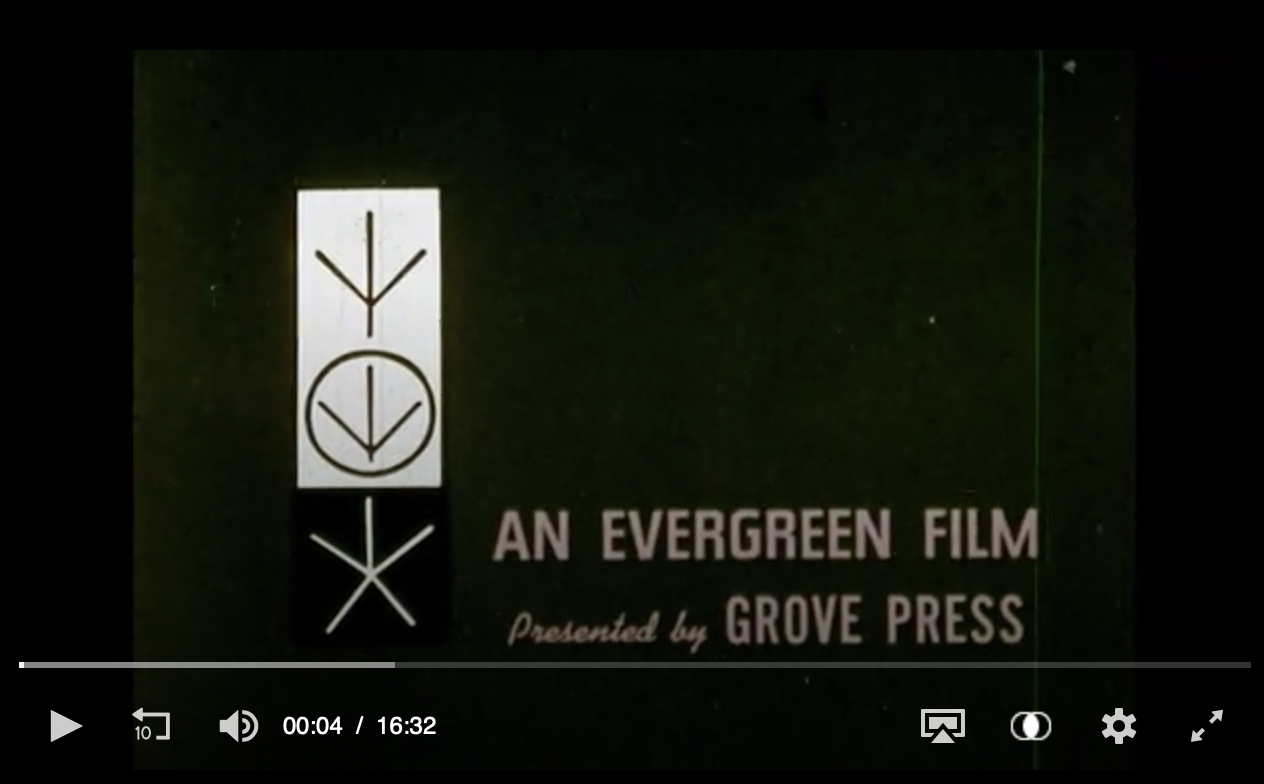
____________
Scrambles (1964)
‘This biker documentary was selected for screening at the 1964 Flaherty Film Seminar. Emshwiller described it as “a roaring picture of motorcyclists in action. Modern Lancelots and their ladies-in-waiting go wide open for a day at the races. An impressionistic film of guys and gals who get their kicks in direct physical action.”’ — letterboxd
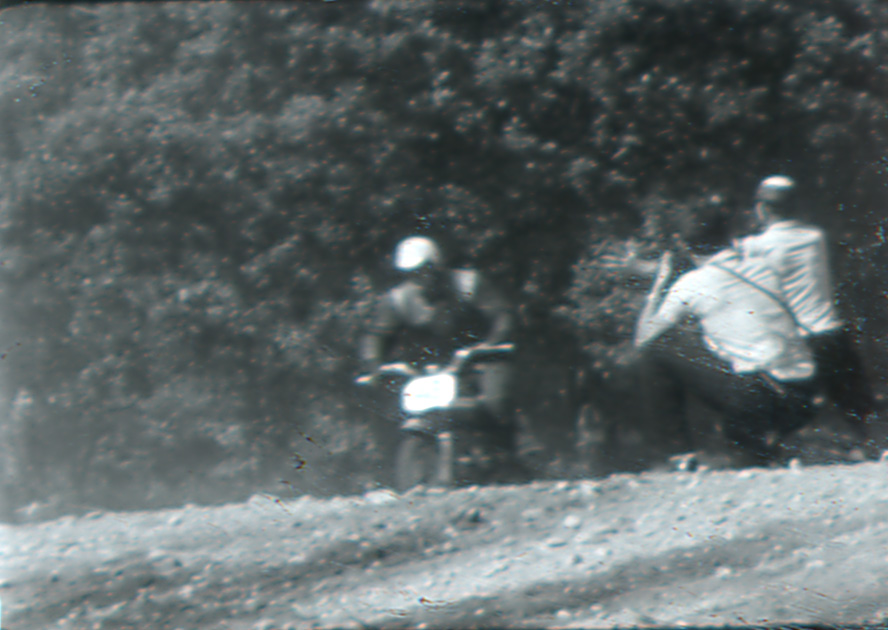
______________
George Dumpson’s Place (1965)
‘A poetic portrait of an outsider artist who, in Emshwiller’s words, “created a small universe with what he found and could carry on his homemade wagon.”‘ –– fmc
the entirety
______________
Relativity (1966)
‘A man wonders, measures, views relationships, people, places, things, time, himself. A sensual journey through a series of subjective reflections. “[A] beautifully photographed color montage of shots; insect, animal, man and galaxy; a sobering antidote to the orgy of subjectivism going on elsewhere.” — Vincent Canby, The New York Times. “The artist’s search for the meaning of his own existence is never-ending and takes many forms. Ed Emshwiller’s remarkable epic, RELATIVITY, continues this exploration with extraordinary frankness and rare technical skill. The sequence which symbolically portrays a woman at the moment of sexual climax is one of the most beautiful in the literature of film.” — Willard Van Dyke. “RELATIVITY is a marvelously sensual film … it is, I have no doubt, a masterpiece.”‘ — Richard Whitehall
Excerpt
__________
Carol (1970)
‘Off and on, Carol and I spent a few days in the woods filming. We got some images of her, some of trees, leaves, twigs and logs. These I combined with sounds from a thumb piano, which were sometimes modified electronically. The results: what seems to me to be a gentle, lyrical film.’ — EE
the entirety
_____________
Film With Three Dancers (1971)
‘In this spin-off from his original plan for Relativity (1966), Emshwiller continued with his desire to penetrate “space in a kind of flying camera, a dream of flying, a kind of sensual, sexual imagery where you were constantly going into an unknown space.” A trio of dancers (Carolyn Carlson, Emery Hermans, Bob Beswick) appear “first in leotards, then in bluejeans, then naked, as they “pass through rituals of movement.”’ — letterboxd
the entirety
______________
Scape Mates (1972)
‘In one of his first experiments in video, Emshwiller creates an electronic landscape of both abstract and figurative elements, where colorized dancers are chroma-keyed into a mutable, computer-animated environment. Working with the “Scan-i-mate,” an early analog video synthesizer, Emshwiller choreographs an architectural, illusory video space, in which frames proliferate within frames, disembodied heads and hands move within a collage of animated forms, and the dancers and their environment are subjected to constant transformations through image processing. With its witty interplay of the “real” and the “unreal” in an electronically rendered videospace, and the skillful manipulation and articulation of a sculptural illusion of three-dimensionality, Scape-mates introduced a new vocabulary of video image-making.’ — Electronic Arts Intermix
Excerpt
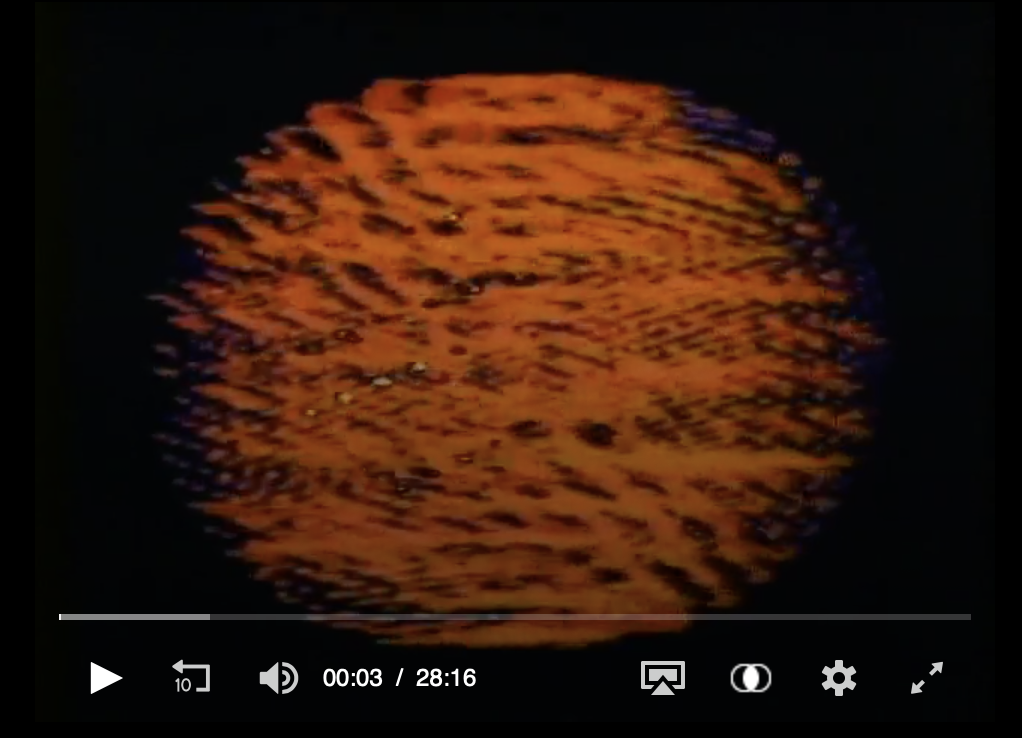
______________
Sunstone (1979)
‘Sunstone is a landmark tape. Symbolic and poetic, it is a pivotal work in the development of an electronic language to articulate three-dimensional space. The opening image is an iconic face, which appears to be electronically “carved” from stone. A mystical third eye, brilliantly crafted from a digital palette, radiates with vibrant transformations of color and texture. Sculpting electronically, Emshwiller then transforms perspectival representation: the archetypal “sunstone” is revealed to be one facet of an open, revolving cube, each side of which holds a simultaneously visible, moving video image. Created with what was then complex technology over an eight-month period, this emblematic spinning cube metaphorically describes a three-dimensional, temporal space, both hyperreal and simulated. Emshwiller’s humanistic approach to technology ushered in the 1980s with a new electronic vocabulary for conceptualizing and visualizing images in space and time. Reflecting an image-saturated world, Sunstone marked a new stage in electronic art.’ — Electronic Arts Intermix
the entirety
_______________
Skin Matrix (1984)
‘Emshwiller writes that the visually complex and densely textured Skin Matrix is a “video tapestry… a layering of different manifestations of energy: electronic (light, video, computer), inorganic (dunes, rocks, mud), organic (wood, plants), human (skin, hair), individual (faces, eyes), imagination (sculpture, robot).” His intricate electronic transformations of tactile surfaces, landscapes and human faces signify a metaphysical process that simultaneously masks and reveals; he achieves an uncanny spatial illusion of depth through layering and movement. Creating sophisticated image patterns and structures with the simple Bally Arcade computer (used for playing video games), Emshwiller weaves together the lush textures and kinetic energy of the organic and the technological.’ — Electronic Arts Intermix

*
p.s. Hey. ** Ian, Hi, Ian! Nice to see you. Oh, man, you could’ve made a career out of that practice apparently. Did you document your artworks? Is that a dumb question? Big congratulations on your marriage! Are you doing (or have you been doing) a honeymoon type of thing? Love back from your country’s sibling in arms (kind of) France! ** Scunnard, Glad you liked it. My fave lit. blogs were in my mid-year list in the internet section if you want to turn back some pages. Everyone, Scunnard has a question for you: ‘What are the literary blogs you pay attention to these days? I’m out of date… what ever happened to htmlgiant and the ilk?’ ** David Ehrenstein, Hi, sir. Everyone, David’s FaBlog draws some kind of correlation between Trump’s Mt. Rushmore thing and Wes Anderson’s ‘Rushmore’, so that could be interesting. Here. ** KK, Hey, Kyle! Best of luck with the potential job. Yeah, right? About ‘Death Sentence’. Messed me up in a positive way forever. And Butor is awesome. Have you read ‘Mobile’? Nice reading you’ve got going on there. No, I don’t know Reza Negarestani, but now I will start to know thanks to you. Thanks! The odd balls in writing workshops are the ones most likely to succeed. I mean in the real sense. Cool, great that Bud Smith is being of help. New novel? No, it doesn’t come out until late next year, so I doubt I’ll hear much of anything from my editor until later this year at the earliest. But if there’s news, I’ll share it. Thanks for asking, man. I hope your week is starting majestically. ** Bill, Thanks, pal. Yeah, G&G being big carnivores does not surprise me for some reason. Did you see that recent, self-doctored video of them dancing. Pretty funny. I second the VanDerBeek recommendation. I did a Day about him if that’s helpful at all. ‘Rey’: I’ll see if I can find it. I’ve yet to see a film that was Maddinesque that didn’t suffer greatly by comparison. See: ‘The Wild Boys’. ** h (now j), Hi. Ha ha, I love that that post made you hungry! But I hope it didn’t end with you puking, obviously. Yeah, it’s almost shocking how nice and mild the summer has been so far. Enjoying every precious hour of that. Have an an excellent week’s start. ** _Black_Acrylic, I agree that’s a particularly good Creed. Man, I hope I’m wrong in thinking the pubs reopening is a guaranteed invitation to a massive spike. i just saw that there’s that new Helena Hauff set/album and was about to get it. Cool. Bon Monday! ** Steve Erickson, Hi. No, I didn’t know that. What a terrible film. I don’t if it being a ‘thing’ is good or not. Everybody in the US seemed to be going nuts about all the fireworks. Strange. No, Bastille Day means nothing to me. Closed stores. Maybe I’ll go watch the fireworks. There’s an aerial parade of extremely loud jets in the morning over the Champs Elysee, and I’m two blocks from it, so I’ll get blasted and rumbled, which could be nice. Given how well everything goes here so far and virtually everyone’s dutiful enacting of the social rules, I’m not spooked by moviegoing, although I haven’t been yet. Timely named new song there. I’ll hit it. Everyone, Mr. Erickson’s new song is … Well, I let him tell you about it. Steve: ‘I wrote a song today, “East Village Pyro,” whose title comes from that, but this is the first time I’ve tried polyrhythms. I looped a sample of congas through the whole song, and sometimes layered two of them slightly out of time. It started off as a bunch of noise, and then I wrote a chord progression. Here’s the link.’ ** Okay. I’m going to venture a wild guess that many of you do not know the films of Ed Emshwiller. And I’m going to hope that you take a little time to find out about him and films today, maybe even watch them a little via the embeds or at least pen his work in for future viewing by you. That’s the blog’s goal for this Monday. See you tomorrow.




 Now available in North America
Now available in North America 
Ed Emshwiller! Thank you! I’ve attended a few shows in the recent retrospective (before C19 times…) at Anthology Film Archives. Feels like it’s been a long time since those nights of outings. I loved his early abstract (and painterly) dance films. Really enjoyed them. Some of other works by him were a bit too revolting and saturated with his male gaze and angst (and fantasy), and I almost didn’t like them, but that might have to do with a generational difference in approaching body and sexuality. It was interesting to think about, nonetheless. And hey, I really like Sunstone! A very skilled and compelling artist, overall. His sci-fi illustrations are cool, too.
No, I didn’t puke. Still, I overate, I think. Mostly, ice cream and bubble tea. It was delicious, but I’m feeling very sugary right now. Feeling like everywhere. Oh, I started reading Steve Abbott reader Beautiful Aliens thanks to your recommendation. I’m loving it so far. Lively (and comfortably erudite) writing style and good emotion. But I should focus and process these more. Wow, Abbott was such a good essayist. I hope you can enjoy your favorite espresso on your walk today. Sorry for this scattered comment!
Emsh is a delightful filmmaker and was a delightful man. Besides the films listed here, he was DP on Adolfas Mekas’ “Hallelujah the Hills” (1963) one of the most spectacularly beautiful black and white films ever made.
ENNIO MORRICONE R.I.P.
Among his many, many MANY works I love this song he wrote with Gino Paoli for Bertolucci’s “Before the Revolution”
I second Reza Negarestani. In HARLEM SMOKE I (somewhat cheekily) had a character reading an “Oprah’s Book Club” edition of his novel Cyclonopedia… which doesn’t seem very likely, ha ha.
I’m on vacation this week. For the first time in like 9 years we’re not going up to the Maine cabin, mainly because the governor of Maine wants all Rhode Island people entering the state to be tested for the coronavirus… yet the same standards do not apply to Massachusetts and New York… despite the fact our state currently has one of the lowest rate of infections right now (even lower than Maine!). So it’s kind of a “staycation” I guess. We did go mini-golfing today, though (which, as you know, is something we always do up in Maine).
Hey Dennis – Ed Emshwiller is new to me and his films look fantastic. Will spend some time tomorrow checking these out.
I enjoyed the timing of ‘Puke’ day on July 4th. Have you run the Daniel Schmid day you mentioned a while back? My mind is so swiss cheesed these days I wasn’t sure if I missed it.
I *loved* ‘Zac’s Drug Binge’ which I’ve binged twice so far. The new format works so well and I enjoyed slowing down and taking in each combo before moving to the next. So many were elegant and felt like they were always meant to exist that way. The timing on them, too. Do you ever manipulate that aspect? The timing was always so right on. I appreciate some of the more abstract ones with colors, shapes, glitches, etc. It was really fun, funny, and startling, with more than a few sublime moments.
Been radically revising an old screenplay, an old project that’s been around for-ever and seeing if there’s a some life left in the thing. It’s cratering my head, what’s left of it these days, but not in an entirely bad way. Want to get this out of the way before plunging back into the next part of the novel.
Film With Three Dancers looks and sounds fantastic. So far ahead of its time, wow.
Completed my first bit of writing in a couple of weeks today, an ultra short thing about a data clerk conducting a form of mirror magic to win back his ex girlfriend. Got immediate feedback from my friend saying she loves it so am really happy about that.
Dennis, I know the films of Emshwiller up and down and inside and out. Usually watch them every weekend here in the Wines household. Okay, I’m lying. But I know a little more right now than I did before I got on here.
Puke day. 1. Was it intentional, its appearing on July 4, as a kind of comment on July 4. 2. It was appropriate that I saw it first on Sunday because that’s how I felt. Cookout went great, but then I ate some really rich sweets -a slice of cheesecake and way too much of this cake I bought that was frosted in really rich heavy cream, with almond slivers, coconut, strawberries, kiwis, and tangerines. Woke up Sunday about to spew. Didn’t happen, though.
Yeah, would still be totally up for one of those baby cakes, though. 😀
I should learn how to make one myself. Nah, I’ll wait till I’m allowed back across the pond in 2075 to get one there.
I think my logic as a kid was thus: GIVE ME WHAT I WANT AND EVERYTHING WILL BE OKAY! Quite the little perfectionist and though I wasn’t a crier or screamer, I’d get totally frustrated when things didn’t turn out perfectly. Luckily, I’ve learned that things usually don’t turn out perfectly and I can’t worry about shit out of my control. Plus, just use some logic.
Emshwiller’s work looks great, definitely something I should spend time with. I love the still with the white lines on black background that look like naked human bodies (ok, so I’m predictable). Let me try to find where it’s from, hmm.
Totally understand your wariness with Maddin-esque work, Dennis. I think Rey is flawed, but it does have a kind of manic energy and interesting historical backdrop.
Funny to hear all these puke aftermath stories for the weekend. I saw a couple Gregg Araki films myself, and there was plenty of puke action.
h (then j), I’d love to see your article on VanDerBeek, thanks! I’m oneofmanyhsus@yahoo.com. Thanks for the link to your VDB day, Dennis. I don’t think I saw it back then (I was still in the tail end of my work hell), will definitely check it out soon.
Bill